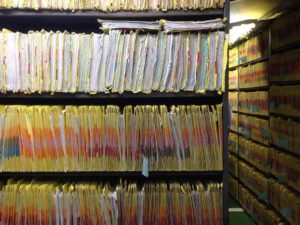Exploring Medical Transcription Training

What does a medical transcriptionist do? The answer to that question is somewhat complicated, but they help maintain important documentation that can be used in everything from patient histories to lawsuits.
What They Do
A medical transcriptionist takes spoken and recorded information and they turn it into a readable transcript. This transcript can often also be stored as a digital file, which makes it easier for people to search for relevant portions of the text.
In order to do this, a medical transcriptionist can take, for example, an audio recording of notes of a procedure, such as an operation, and turn them into a readable document.
In some hospitals, where voice recognition and voice-to-type software is used to make the transcripts of various surgeries, a transcriptionist, commonly known as a healthcare documentation specialist, will be employed not to write out a full transcript, but rather to edit the transcript produced by that software.
Such software is not, after all, the most accurate, as anyone who’s ever had to use it can tell, and it often has trouble with things like technical jargon and scientific terms. It’s important for a medical transcriptionist to have some medical knowledge so that they might be able to pick up places where the transcript obviously made a mistake.
What They Know
Obviously, anyone engaged in such work should know how to type, and be able to do so at a decent rate of speed, or else work that should take a few hours could become the work of days or even weeks.
However, a good medical transcriptionist needs to also understand at very least basic medical terminology and slang, or else there are a number of terms that they might not be able to catch and correct.
If you want to be a good medical transcriptionist, you should also be aware of common medical abbreviations and slang, because doctors and nurses use it often.
How To Become A Medical Transcriptionist
Becoming a medical transcriptionist generally requires at least some level of education, and the typical entry-level employee has a postsecondary non-degree award or certification.
What this means is that after completion of high school (or a GED), employers are generally looking for someone who has taken classes in being a medical transcriptionist.
Such classes should cover medical terminology, medical slang, and, if needed, improving typing skills, as well as proofreading and editing skills.
The average pay for someone working as a medical transcriptionist, however, is very good, especially for a job that doesn’t require a college degree. The job also remains in demand, although some companies are more often using firms located overseas.
If you want to learn about being a medical transcriptionist, a good place to start would be a class from Stratford Career Institute. You can learn the basics of the job, and even make sure that it’s the right job for you as you learn about what the job entails.

Interesting in exploring training options in medical transcription? Read more or sign up today!

